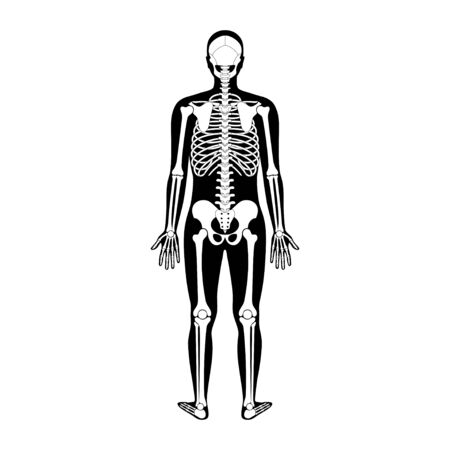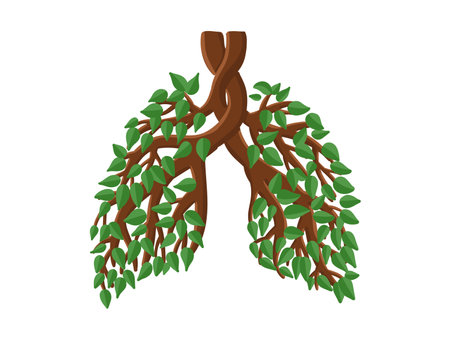Understanding Chronic Pain in Older Adults
Overview of Common Chronic Pain Conditions in Seniors
Chronic pain is a frequent concern for many older adults in the United States. As people age, certain health conditions become more common, leading to ongoing pain that can affect daily life. Some of the most typical chronic pain issues seen in seniors include osteoarthritis, lower back pain, neuropathy (nerve pain), and joint pain from previous injuries or surgeries.
| Condition | Common Causes | How It Affects Seniors |
|---|---|---|
| Osteoarthritis | Wear and tear of joints over time | Pain, stiffness, limited movement in knees, hips, hands |
| Lower Back Pain | Aging spine, muscle weakness, disc problems | Difficulty standing or walking, trouble sleeping |
| Neuropathy | Diabetes, nerve damage, poor circulation | Tingling, burning, numbness in feet or hands |
| Joint Pain (other) | Past injuries, inflammation, repetitive use | Soreness and swelling in shoulders, elbows, or other joints |
Main Causes of Chronic Pain in Older Adults
The causes of chronic pain in seniors are often connected to changes that happen naturally with aging. Cartilage in joints breaks down, muscles lose some strength and flexibility, and bones may become thinner and more brittle. Health conditions like arthritis and diabetes are more common in this age group and can also contribute to ongoing pain.
How Chronic Pain Impacts Daily Life and Well-Being
Chronic pain does more than just cause physical discomfort. For many older Americans, it can make it hard to do everyday activities such as walking around the house, getting dressed, cooking meals, or enjoying hobbies. Long-term pain can lead to feelings of frustration or sadness because it limits independence and social activities. Sleep problems are also very common when someone is dealing with ongoing pain. All these factors can have a big impact on overall well-being and quality of life.
2. Communicating Effectively with Healthcare Providers
Good communication with doctors, nurses, and therapists is a key part of managing chronic pain, especially for older adults. Talking openly about your pain helps your healthcare team understand your needs and work with you to find the best solutions. Here are some practical tips to help you communicate more effectively at your appointments.
Prepare Before Your Visit
It’s helpful to plan what you want to say before seeing your healthcare provider. You can write down questions, symptoms, and any concerns about your pain or treatments. Bringing a list helps make sure you don’t forget anything important during your appointment.
Checklist for Your Appointment
| What to Bring | Why It Helps |
|---|---|
| List of current medications (including supplements) | Avoids drug interactions and helps providers understand your care |
| Notes on pain levels and symptoms (when they happen, how they feel) | Makes it easier to track patterns and triggers |
| Your questions or concerns written down | Ensures all your worries are addressed during the visit |
| A friend or family member for support (if needed) | Provides help remembering information and asking questions |
Talking About Your Pain Clearly
Describing your pain in detail helps your provider understand what you’re experiencing. Try to share:
- Where: The exact location(s) of your pain
- When: How often it happens and how long it lasts
- How it feels: Is it sharp, dull, burning, aching?
- What makes it better or worse: Activities, times of day, weather changes, etc.
- Pain scale: Rate your pain from 0 (no pain) to 10 (worst possible pain)
Discussing Treatment Goals and Preferences
Your treatment should fit your life and personal values. Tell your provider what matters most to you—whether it’s being able to walk comfortably, sleep better, or enjoy time with family. If a treatment doesn’t fit your lifestyle or beliefs, speak up. Ask about other options or adjustments that might work better for you.
Questions You Can Ask Your Provider
- What are the benefits and risks of this treatment?
- Are there alternatives if this doesn’t work for me?
- How soon should I expect to feel better?
- What side effects should I watch out for?
- If my pain gets worse, what should I do?
Telling Providers About Other Health Issues
If you have other medical conditions or take several medications, let your healthcare team know. This helps them avoid problems like drug interactions and creates a safer plan for managing your pain.
If You Don’t Understand Something—Ask!
If your doctor uses words you don’t know or explains something too quickly, ask them to slow down or explain again in simpler terms. It’s okay to take notes or ask for written instructions.

3. Medication and Non-Pharmacological Treatment Options
Understanding Safe Use of Medications
For many older adults living with chronic pain, medications can be part of their pain management plan. However, it’s important to use these medicines safely. Always follow your healthcare provider’s instructions and let them know about all the medications you are taking—including over-the-counter drugs and supplements—to avoid harmful interactions or side effects. Never adjust dosages on your own. Common medications for chronic pain include acetaminophen (Tylenol), some nonsteroidal anti-inflammatory drugs (NSAIDs) like ibuprofen, and in certain cases, prescription medications.
Medication Safety Tips
| Tip | Why It Matters |
|---|---|
| Take medicine at the same time each day | Helps maintain steady levels in your body |
| Use a pill organizer | Reduces risk of missed or double doses |
| Avoid mixing with alcohol | Prevents dangerous reactions |
| Report new symptoms to your doctor | Catches side effects early |
The Role of Physical Therapy
Physical therapy (PT) can help older adults manage chronic pain by improving strength, balance, and flexibility. A physical therapist will design exercises tailored to your needs, which may include gentle stretching, strengthening routines, and movement training. PT also teaches safe ways to move during daily activities to prevent further injury.
Occupational Therapy for Everyday Living
Occupational therapists focus on helping you do everyday tasks more easily and with less pain. They may suggest adaptive tools (like reachers or shower chairs), teach energy-saving strategies, and recommend home modifications. This support can make daily life safer and more comfortable.
Integrative Approaches: Mindfulness, Heat/Cold Therapy, and Gentle Exercise
In addition to medication and therapy, several non-pharmacological options can help manage chronic pain:
| Option | Description & Benefits | Examples/Tips |
|---|---|---|
| Mindfulness & Relaxation Techniques | Helps reduce stress and improve how you cope with pain by focusing on breathing or present-moment awareness. | Try guided meditation apps or deep-breathing exercises. |
| Heat/Cold Therapy | Applying heat can relax stiff muscles; cold packs can reduce swelling. | Use heating pads for 15–20 minutes; apply ice packs wrapped in a towel for short periods. |
| Gentle Exercise | Keeps joints flexible and boosts mood without adding strain. | Walking, water aerobics, or chair yoga are great options—always start slowly! |
Working With Your Care Team
Your healthcare providers—doctors, nurses, therapists—are partners in finding the best combination of treatments for you. Don’t hesitate to ask questions or share any concerns about your pain plan. Together, you can build an approach that fits your lifestyle and helps you stay active and independent.
4. Self-Management and Lifestyle Strategies
Pacing Activities to Prevent Flare-Ups
For older adults dealing with chronic pain, doing too much at once can often make symptoms worse. Pacing means breaking up tasks into smaller steps and taking regular breaks. This helps prevent pain from increasing and lets you stay active without overdoing it.
Example of Pacing Daily Activities
| Activity | Traditional Approach | Paced Approach |
|---|---|---|
| House Cleaning | Clean whole house in one day | Clean one room per day with breaks |
| Grocery Shopping | Shop for a week’s groceries at once | Shop for a few days at a time or use delivery |
| Gardening | Work in garden until finished | Set a timer for 20 minutes, then rest |
Setting Realistic Goals
Chronic pain can make it hard to do everything you used to do. Setting small, achievable goals helps build confidence and makes progress easier to track. For example, instead of aiming to walk a mile right away, start with walking to the mailbox and back, then gradually increase as you feel able.
Maintaining Social Connections
Staying connected with friends and family is important for both mental and physical health. Chronic pain can sometimes lead people to withdraw from social activities, but even simple interactions—like phone calls, video chats, or joining a local community center—can help reduce feelings of isolation and improve well-being.
Using Tools Like Pain Diaries
A pain diary is a simple way to keep track of your symptoms each day. By noting when pain occurs, what you were doing, and any other symptoms, you can find patterns and share this information with your healthcare provider. This makes it easier to adjust your treatment plan as needed.
Pain Diary Example Table
| Date/Time | Pain Level (1-10) | Activity/Trigger | What Helped? | Notes/Comments |
|---|---|---|---|---|
| 6/10 Morning | 5 | Getting out of bed | Took medication, gentle stretching | Pain eased after 30 minutes |
| 6/10 Afternoon | 7 | Walking outside | Sitting down for 10 minutes | Pain increased after longer walk than usual |
| 6/10 Evening | 4 | Sitting on couch watching TV | Used heating pad on back | Pain lower after heat applied |
By using these self-management strategies—pacing activities, setting realistic goals, maintaining social connections, and tracking symptoms—you can take an active role in managing chronic pain and improving quality of life.
5. Accessing Community Resources and Support
Finding Help in Your Local Community
Living with chronic pain can be challenging, but many local resources in the United States are designed to help older adults manage their symptoms and improve their quality of life. Knowing where to find support can make daily life easier and help you stay active and connected.
Types of Resources Available
| Resource Type | Description | How It Helps |
|---|---|---|
| Senior Centers | Community centers offering social, educational, and wellness activities for older adults. | Provide exercise classes, health workshops, and a place to meet peers. |
| Support Groups | Groups that meet in person or online to share experiences with chronic pain. | Offer emotional support, practical tips, and a sense of community. |
| Transportation Services | Programs that help seniors get to medical appointments, grocery stores, or social events. | Reduce isolation and make it easier to access care and resources. |
| Online Tools & Apps | Websites and mobile apps tailored for older adults managing chronic pain. | Track symptoms, connect with experts, and find information from home. |
How to Get Started
- Ask your healthcare provider: Doctors and therapists often know about local programs and can refer you.
- Contact your local Area Agency on Aging: These agencies help seniors access services like meals, transportation, and social activities.
- Visit your public library: Many libraries offer free classes or information sessions on health topics including pain management.
- Search online: Websites like Eldercare Locator (eldercare.acl.gov) provide lists of community resources by ZIP code.
Tips for Making the Most of Community Support
- Stay involved: Regular participation in group activities can reduce loneliness and boost mood.
- Be open to new experiences: Trying new classes or groups may help you discover effective coping strategies.
- Share your story: Talking about your challenges can encourage others and help you feel understood.
If You Need Extra Support
If you have trouble accessing these resources on your own, ask a family member or caregiver to help you get started. Many programs are free or low-cost for seniors. Remember, you are not alone—many people are ready to help you live well with chronic pain.


